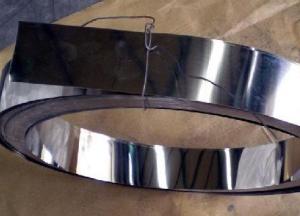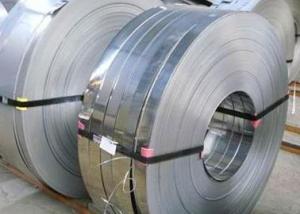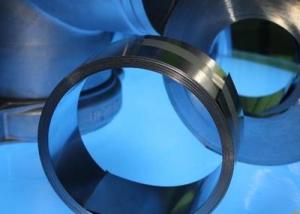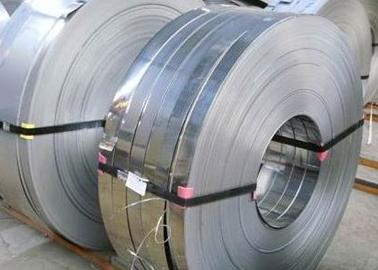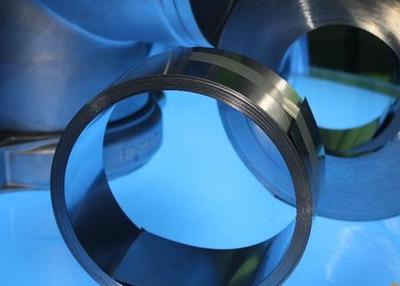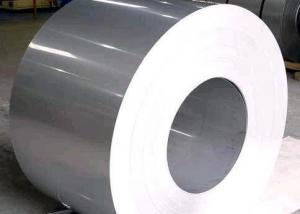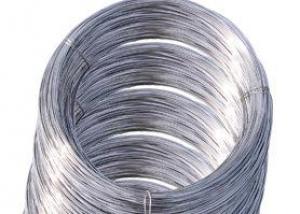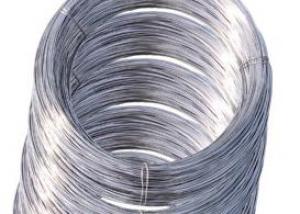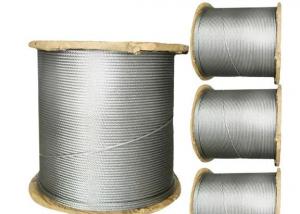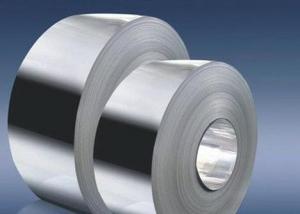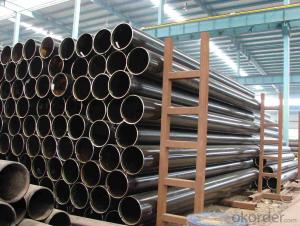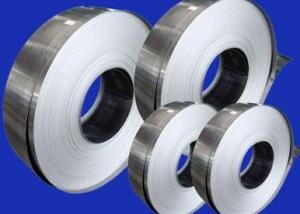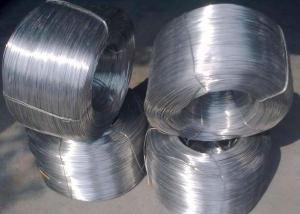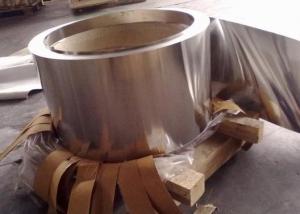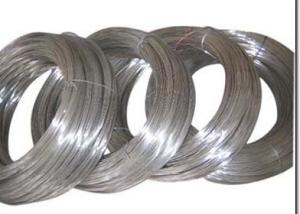420 Stainless Steel Strips
- Loading Port:
- China Main Port
- Payment Terms:
- TT or LC
- Min Order Qty:
- 1 Ton m.t.
- Supply Capability:
- 2000 Tons Per Month m.t./month
OKorder Service Pledge
OKorder Financial Service
You Might Also Like
420 Stainless Steel Strips
1. Chemical composition
|
C |
Si |
Mn |
P |
S |
Ni |
Cr |
|
0.16-0.25 |
max1.00 |
max1.00 |
max0.04 |
max0.03 |
--- |
12.00-14.00 |
2. Mechanical properties
|
Yield Strength |
Tensile |
Elongation |
Hardness (HV) |
Hardness (HRB) |
|
≥225 |
≥520 |
≥ 18 |
≥234 |
≥97 |
3. Standard: AISI, ASTM, GB, EN, DIN, JIS
4. Surface: 2B, NO.1, BA, NO.4, Hairline, SB, Mirror finish, Anti-skid, Cherkered etc.
5. Size: Thickness: 0.3-3mm (cold rolled), 3-40mm (hot rolled)
Width: 1000mm or 1219mm or 1240mm for cold rolled, 1500mm for hot rolled.
Length: As customers' request.
6. MOQ: 1 Ton
7. Payment terms: T/T or L/C
8. Packing: Seaworthy package with wooden or Iron pallets with the paper and the steel strip, or as customers' request.
9. Delivery time: Usually about 7 days after we confirming the order, or according to your quantity.
If you have any question or demand, pls feel free to contact me.
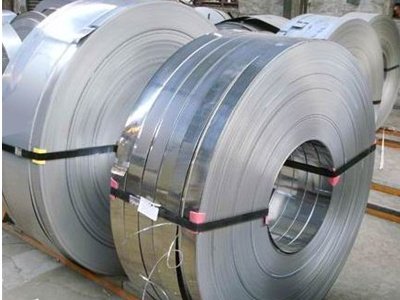
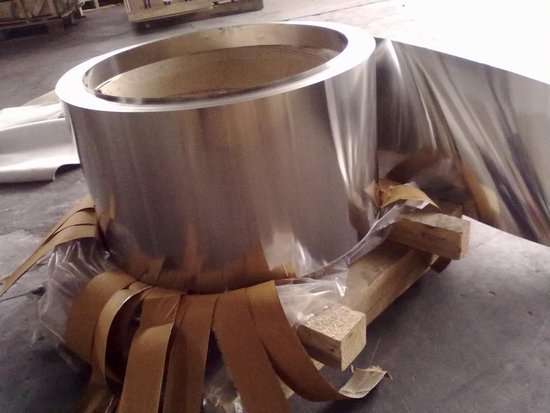

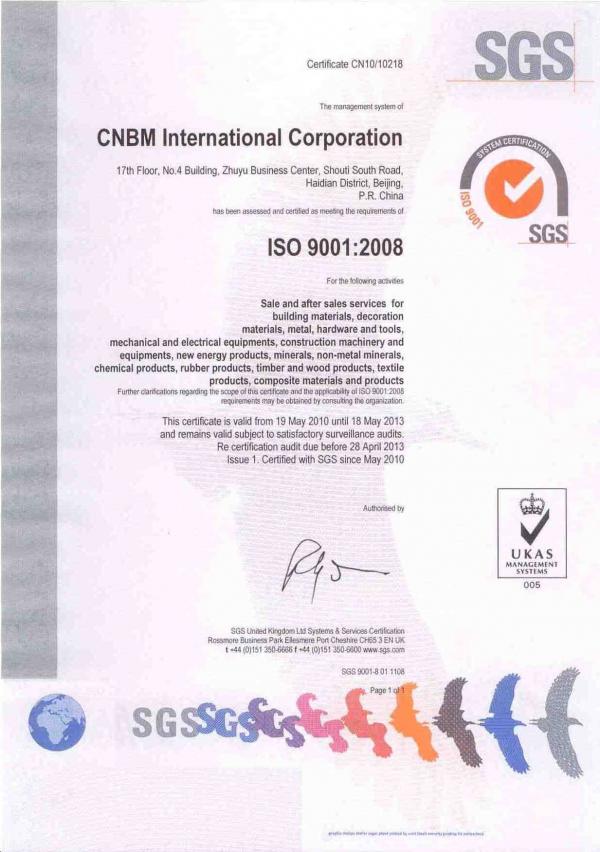
- Q: Is stainless steel wire suitable for architectural mesh?
- Yes, stainless steel wire is highly suitable for architectural mesh. Stainless steel is a corrosion-resistant material that can withstand harsh environmental conditions, making it ideal for outdoor applications such as architectural mesh. It offers excellent strength and durability, ensuring that the mesh can withstand heavy loads and maintain its structural integrity over time. The wire can be woven into intricate patterns and designs, allowing for creative and visually appealing architectural applications. Additionally, stainless steel wire can be easily cleaned and maintained, making it a practical choice for architectural projects where hygiene and cleanliness are important. Overall, stainless steel wire is a reliable and versatile material that meets the requirements of architectural mesh in terms of aesthetics, durability, and functionality.
- Q: What are the different types of stainless steel wire rope pulleys?
- There are several types of stainless steel wire rope pulleys, including snatch pulleys, single sheave pulleys, double sheave pulleys, and swivel pulleys. Each type is designed to suit specific applications and requirements.
- Q: Can stainless steel wire be used in medical applications?
- Yes, stainless steel wire can be used in medical applications. Stainless steel is a durable and corrosion-resistant material that is commonly used in medical instruments, such as surgical tools, catheters, and orthopedic implants. It is preferred for its biocompatibility, strength, and ability to maintain sterility in medical environments.
- Q: Can stainless steel wire be used for HVAC systems?
- Yes, stainless steel wire can be used for HVAC systems. Stainless steel is a popular choice for HVAC applications due to its durability, corrosion resistance, and high tensile strength. It is commonly used for various purposes in HVAC systems, such as ductwork fabrication, supporting air handling units, suspending equipment, and reinforcing flexible ducting. Stainless steel wire is capable of withstanding high temperatures, humidity, and exposure to chemicals commonly found in HVAC systems. Additionally, its non-magnetic properties make it suitable for applications where magnetic interference is a concern. Overall, stainless steel wire provides long-lasting performance and reliability in HVAC systems.
- Q: Is stainless steel wire resistant to stress corrosion cracking?
- Indeed, stress corrosion cracking is effectively resisted by stainless steel wire. The presence of chromium in stainless steel imparts a remarkable resistance to corrosion, as it facilitates the formation of a protective layer on the material's surface. This protective layer effectively shields against corrosive surroundings, thereby thwarting the infiltration of corrosive agents responsible for stress corrosion cracking. Moreover, the inclusion of alloying elements like nickel and molybdenum in stainless steel further augments its ability to resist stress corrosion cracking. Consequently, stainless steel wire is extensively employed in applications that subject it to harsh environments, including the marine, chemical, and oil and gas sectors, where stress corrosion cracking poses a significant concern.
- Q: Can stainless steel wire be used for wire rope tensioners?
- Yes, stainless steel wire can be used for wire rope tensioners. Stainless steel is a strong and durable material that is commonly used in various applications, including wire rope tensioners. It offers excellent resistance to corrosion, making it suitable for outdoor and marine environments where exposure to moisture and harsh conditions is common. Stainless steel wire rope tensioners provide reliable and long-lasting tensioning of wire ropes, ensuring their stability and strength.
- Q: How are stainless steel wire ropes used in sailing?
- Stainless steel wire ropes are an essential component used in sailing for various purposes. They are primarily utilized for rigging applications on sailboats, providing strength, durability, and resistance to corrosion in the harsh marine environment. One of the main uses of stainless steel wire ropes in sailing is for standing rigging. Standing rigging refers to the fixed wires and cables that support the mast, ensuring its stability and preventing it from collapsing under the force of the wind. Stainless steel wire ropes are ideal for this purpose due to their high tensile strength, allowing them to withstand the tremendous loads experienced during sailing. Additionally, stainless steel wire ropes are also employed for running rigging, which refers to the movable ropes used to control the sails and maneuver the boat. These ropes need to be flexible and reliable, as they are constantly subjected to tension, bending, and abrasion. Stainless steel wire ropes provide the necessary strength and flexibility to handle these dynamic loads while maintaining their integrity. Furthermore, stainless steel wire ropes are used in various other applications on sailboats. They are commonly found in lifelines, which are the horizontal ropes running around the perimeter of the boat, providing safety and preventing crew members from falling overboard. These lifelines need to be strong and corrosion-resistant, making stainless steel wire ropes the ideal choice. Stainless steel wire ropes are also employed in halyards, which are ropes used to raise and lower sails. Halyards require a combination of strength and flexibility to handle the weight of the sails and withstand the constant movement. Stainless steel wire ropes fulfill these requirements, ensuring smooth and reliable sail adjustments. Overall, stainless steel wire ropes play a crucial role in sailing, providing the necessary strength, durability, and resistance to corrosion required for the rigging systems on sailboats. Whether it is for standing rigging, running rigging, lifelines, or halyards, stainless steel wire ropes are an integral part of a sailboat's equipment, contributing to its performance, safety, and longevity.
- Q: What are the different wire tensile strengths available for stainless steel wire?
- The tensile strengths available for stainless steel wire can vary depending on the specific grade and manufacturer. However, commonly available tensile strengths for stainless steel wire range from around 1000 MPa (megapascals) to 2500 MPa.
- Q: What are the different types of stainless steel wire fences?
- There are several different types of stainless steel wire fences, including woven wire fences, welded wire fences, chain link fences, and mesh panel fences. Each type has its own unique features and benefits, catering to different needs and preferences.
- Q: Is stainless steel wire suitable for wire rope hooks?
- Wire rope hooks can be suitably made from stainless steel wire. Stainless steel is renowned for its corrosion resistance, strength, and durability, which make it an outstanding material choice for wire rope hooks. It possesses the ability to endure challenging conditions, including being exposed to water, chemicals, and extreme temperatures, without succumbing to rust or deterioration. Moreover, stainless steel wire exhibits exceptional tensile strength, which is vital for maintaining the safety and integrity of wire rope hooks. Consequently, utilizing stainless steel wire for wire rope hooks guarantees reliability, longevity, and optimal performance.
1. Manufacturer Overview
| Location | Shandong,China |
| Year Established | 2005 |
| Annual Output Value | Above US$5.3 Million |
| Main Markets | Europe, China |
| Company Certifications | ISO9001:2000 |
2. Manufacturer Certificates
| a) Certification Name | |
| Range | |
| Reference | |
| Validity Period |
3. Manufacturer Capability
| a) Trade Capacity | |
| Nearest Port | Tian Jin |
| Export Percentage | 30% |
| No.of Employees in Trade Department | 40 People |
| Language Spoken: | English;Chinese |
| b) Factory Information | |
| Factory Size: | Above 50,000 square meters |
| No. of Production Lines | Above 8 |
| Contract Manufacturing | OEM Service Offered;Design Service Offered |
| Product Price Range | Average |
Send your message to us
420 Stainless Steel Strips
- Loading Port:
- China Main Port
- Payment Terms:
- TT or LC
- Min Order Qty:
- 1 Ton m.t.
- Supply Capability:
- 2000 Tons Per Month m.t./month
OKorder Service Pledge
OKorder Financial Service
Similar products
Hot products
Hot Searches
Related keywords
